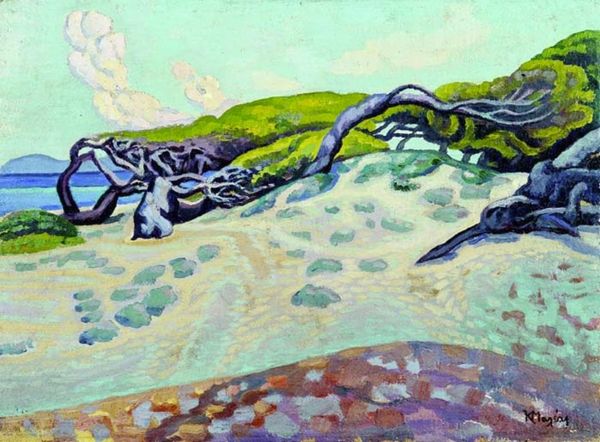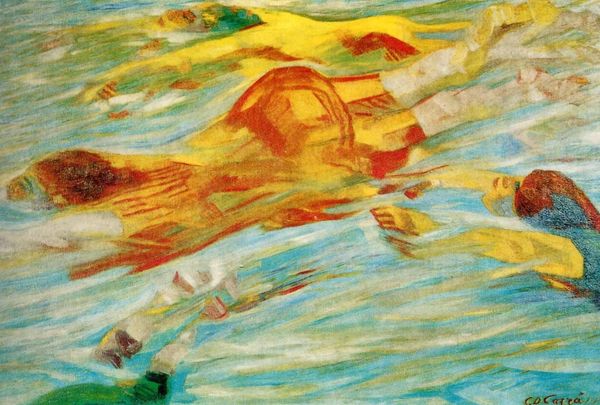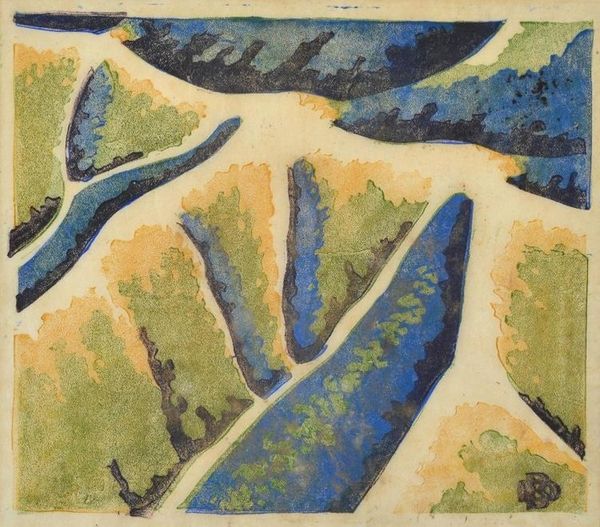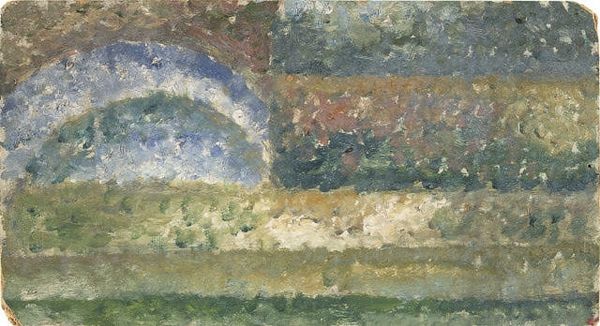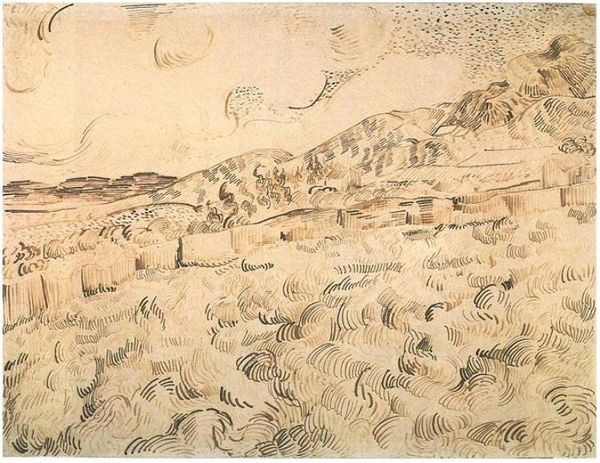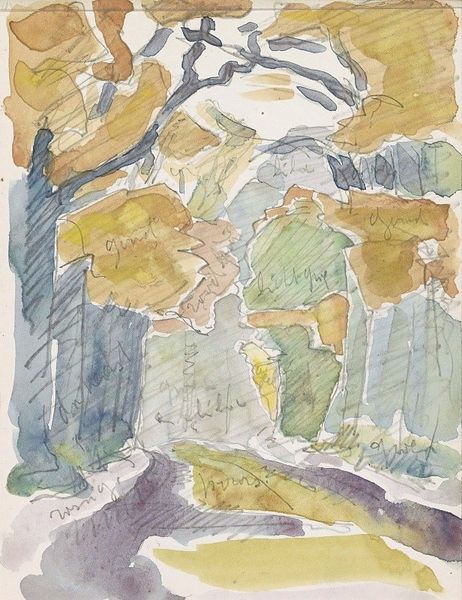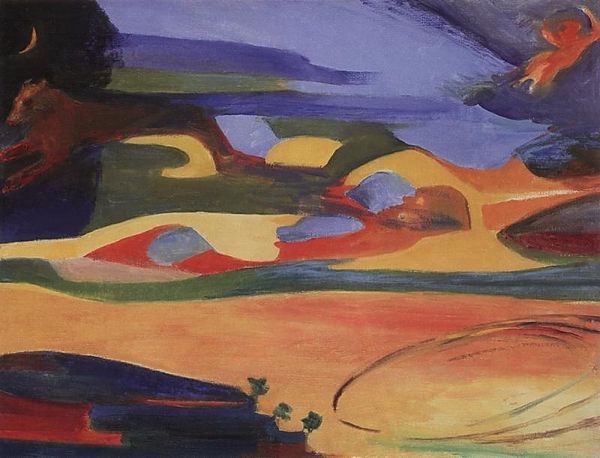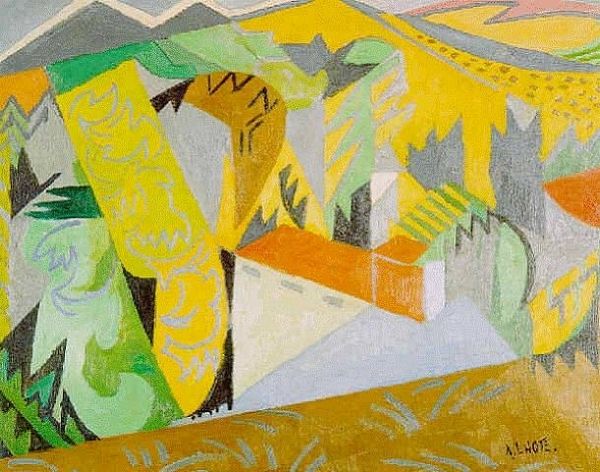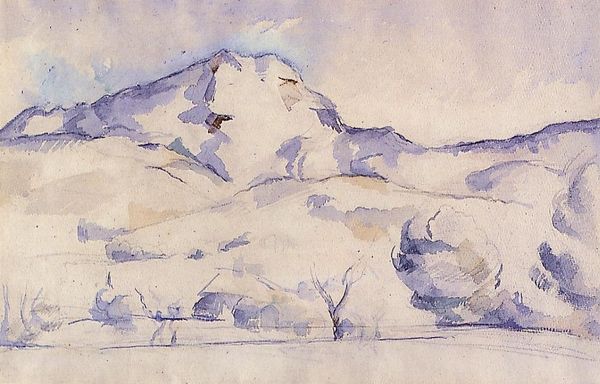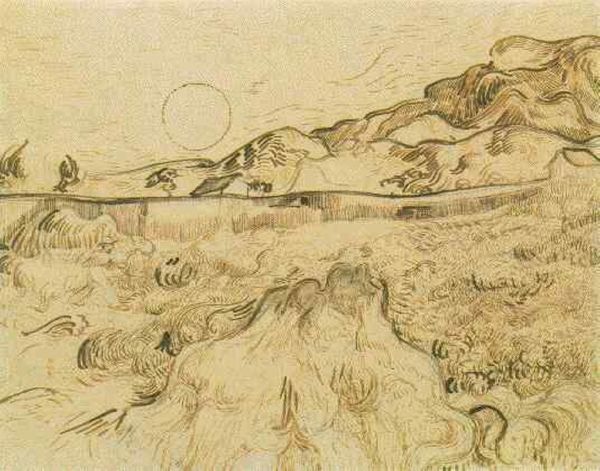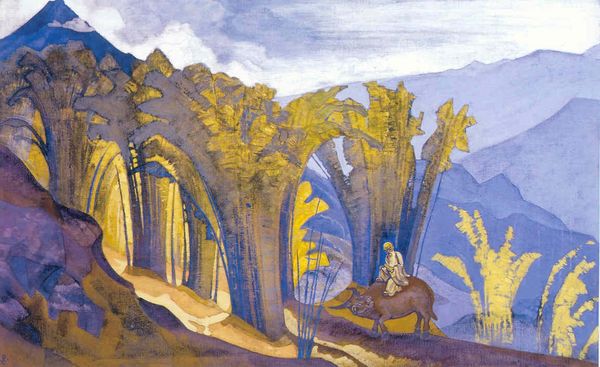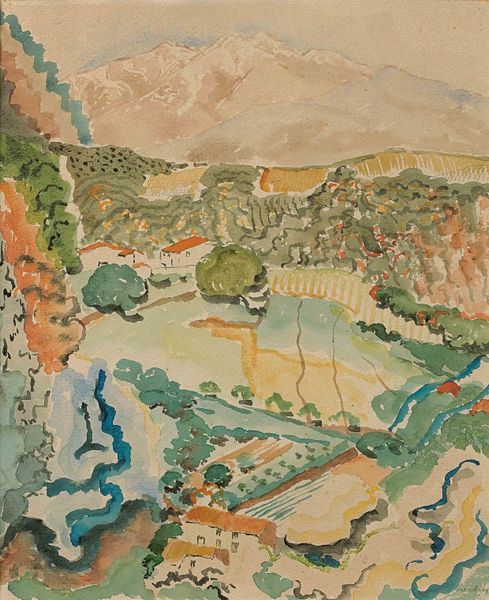
Dimensions: 46 x 32 cm
Copyright: Public domain US
Diego Rivera created this watercolor painting, Landscape at Toledo, on paper. In the early 20th century, it was fashionable for European artists to create idealized landscapes. Rivera adopts that fashion here. But how does the image create meaning? Note the fractured plains in tans and yellows and the dark green trees; we can read the painting as a commentary on land use. Perhaps it’s a critique of Spain's agricultural policies, its class system, or the concentration of land ownership in the hands of a few wealthy families. We might also see the trees as emblems of Mexican identity. Rivera created this work while living in Europe, far from home. Was he nostalgic for the landscapes of his homeland? As historians, we can explore these ideas further, researching the history of agriculture, class, and land use policies in Spain, as well as the relationship between Mexican artists and their homeland. By situating art in its social and institutional context, we gain a richer understanding of its meaning and significance.
Comments
No comments
Be the first to comment and join the conversation on the ultimate creative platform.
